When you own goats, a milk stand proves to be an invaluable piece of equipment. Whether you’re milking or not, it can be used for trimming hooves, giving shots, drawing blood, and performing ultrasounds. It also makes a pretty good place for your barn kitten to eat her food in peace so the puppy doesn’t bother her. Well… as much.
Purchased goat milk stands are wildy expensive, and honestly, I’m not all that impressed with them. Unless you pay someone to build you one, they come pretty standard size. I however, am not standard size, so these milk stands are too short for me which makes milking and trimming hooves uncomfortable. They also are meant for a certain sized goats, so “for nigerian dwarfs” or “for nubians”. But, what if you’re like me and you have both? This simply was not going to cut it for me. So, naturally I bribed by husband and he built me a customized goat milk stand that suited my needs. Did I mention that it was made out of scrap? So yes, a highly functional milk stand was made out of scrap wood we had lying around and it ended up saving us several hundred dollars. And it’s better! I have used this stand now for about a year for milking, trimming hooves, shots, and ultrasounds. It has served me quite well for all of my goats, and there is quite literally nothing about it I would change.
Now, let me be clear this post is not a “how to build a goat milk stand”. I am not a wood worker, and I am not going to walk you through step by step how my husband cut the angles, etc. This merely is a guide that gives the dimensions and little creative ideas to guide you to build your own.
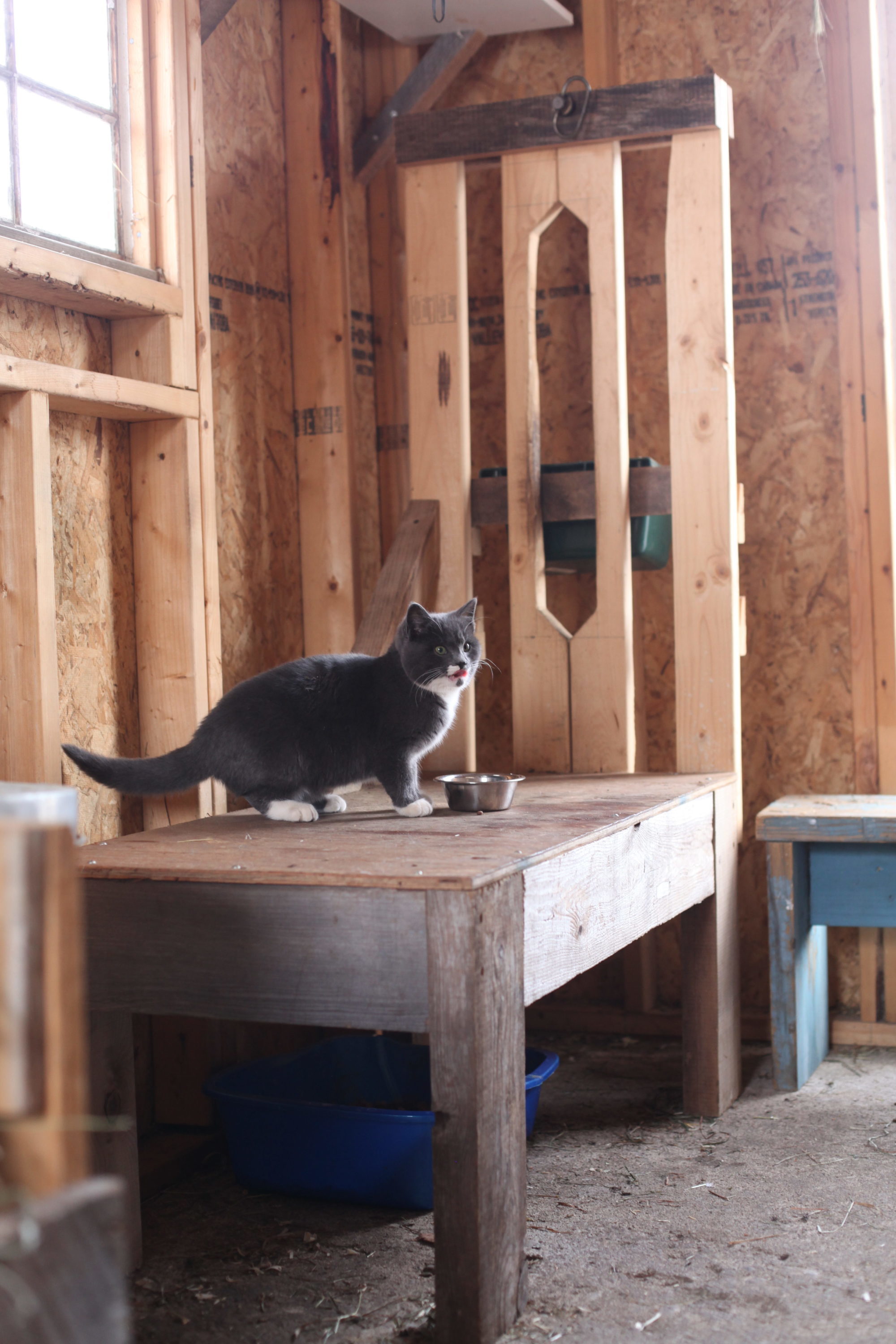
Design Points and Dimensions
When designing the stand, I essentially took all of the dimensions from my friend Angela’s metal stand and then changed them based on some of her suggestions from using it and to suit my needs. Being about 5’10”, her 14″ tall stand was far too short for me to comfortably sit or kneel by. So, I made it taller so I wouldn’t have to hunch down over. The other major issue was that the feeder on hers was at a fixed height. It was an ideal height for Nigerian Dwarfs, but uncomfortably low for a Nubian. So, the challenge was to make the height of the feeder adjustable depending on what size goat was being milked. Specific dimensions of the overall stand are:
-Height from floor to top of the base: 18.5″Height from top of the base to top of the stanchion: 39.5″
-Overall Height from floor to top of stanchion: 58″
-Dimensions of the base (where goats stand) : 20″ wide x 42″ long
-Distance between opening of stanchion when closed: 4″
-Distance from top of base to 1st feeder position (cleat): 12″
-Distance from top of base to 2nd feeder position (cleat): 18″
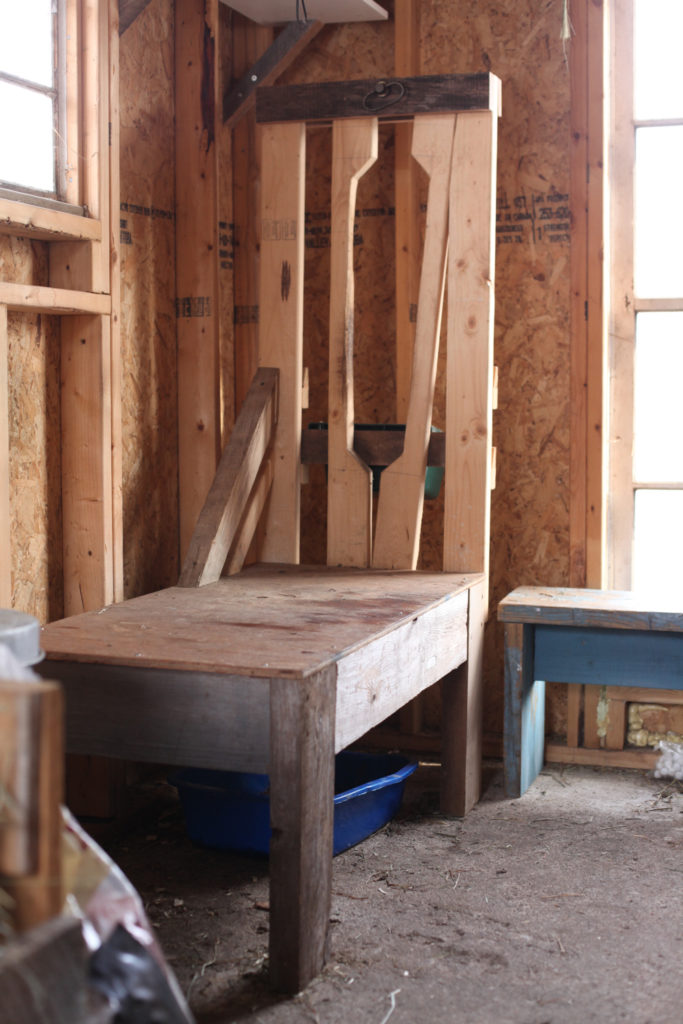
Confused yet? Okay, maybe these additional photos will help you out:
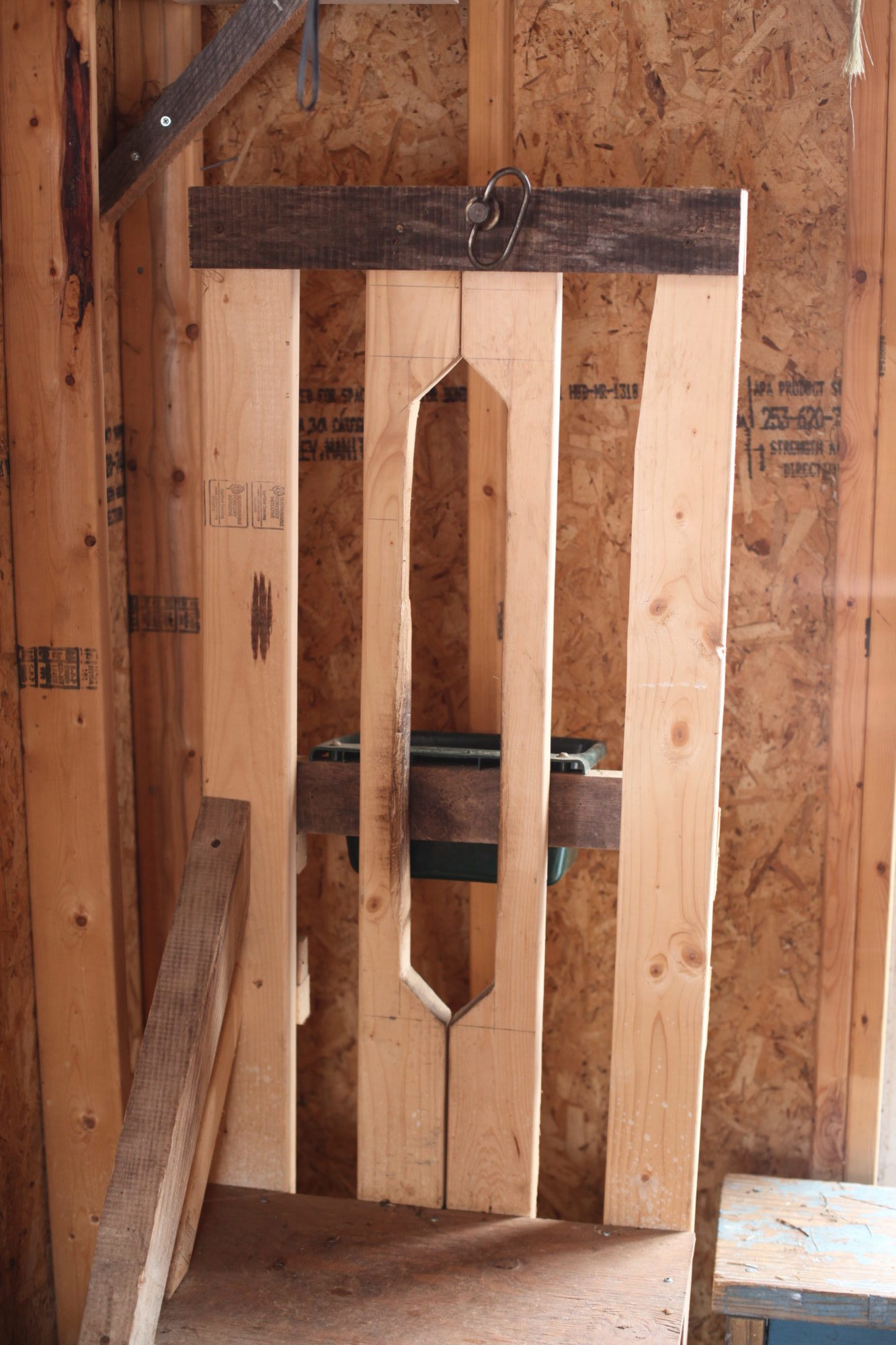
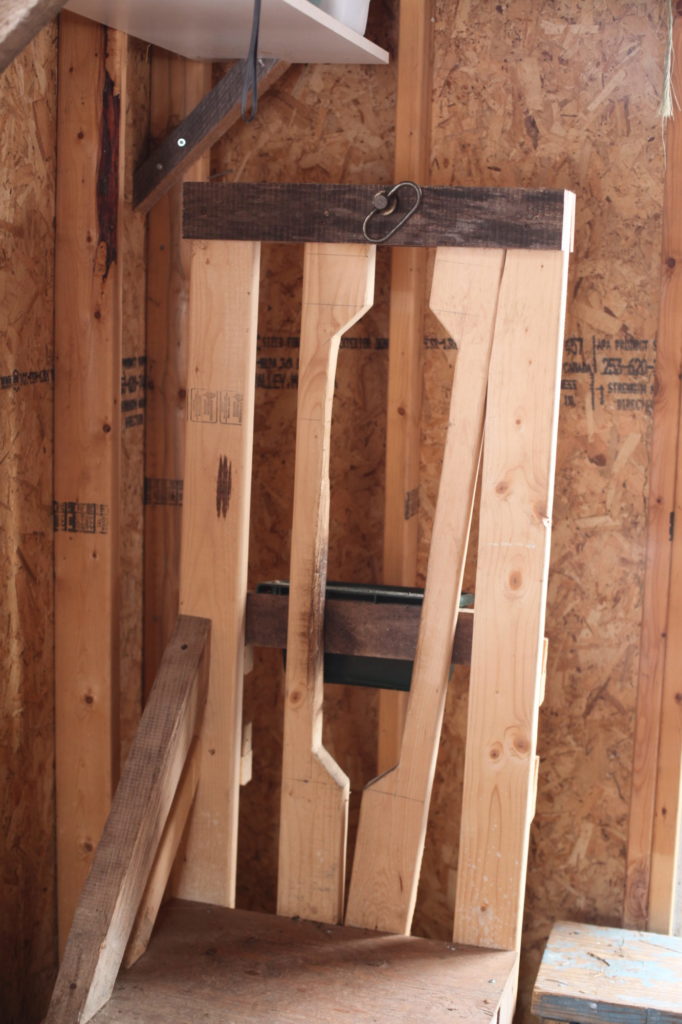
This little number here pictured above is referred to as the “stanchion”. This is actually where the goat’s head will go through in order to eat, allowing you to lock it in and go on with your business. The photo (left) shows the stanchion in the closed position. So in this position the goats head is in and it’s eating away. The inside distance between the two wooden bars is 4″. This is plenty of distance for the goat to not be strangled or uncomfortable in any way, but it also prevents her from being able to pull her head back out. The photo (right) shows the stanchion in the open position. This is the position the stanchion is for the goat to get her head in and out of the locked position.
The wooden bar on the left is in a fixed vertical position while the one on the right is hinged to move left (to lock them in) and right (to open). The bolt at the top fits into a hole that goes through the cross beam as well as the hinged wooden bar to lock it into place. Most milk stands have this bolt on the outside of the stand, but I felt it made more sense to have it on the inside. I mean, that’s the side I’m always on so it made more sense to me?
I have to give credit to my husband, because he really was thinking “in the future” when building this. The existing 4″ opening for the stanchion in the locked position works for my existing herd. But, you never know what will happen down the road. The purchased metal milk stands have different positions that you can lock the stanchion in to make the opening narrower or wider. Basically, he created the same effect with the right hinged wooden bar by offsetting the hole (left photo below) to the right. So that if I need to have a wider opening, there is available room to the left of it on the wooden bar (right photo below) to drill a second hole for a wider opening if needed
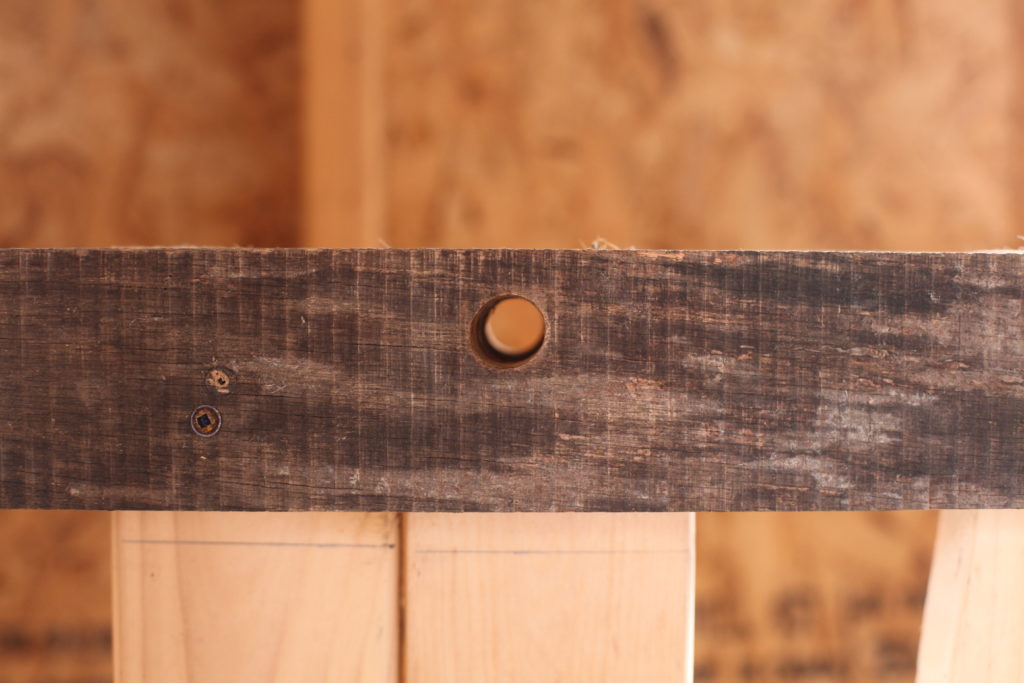
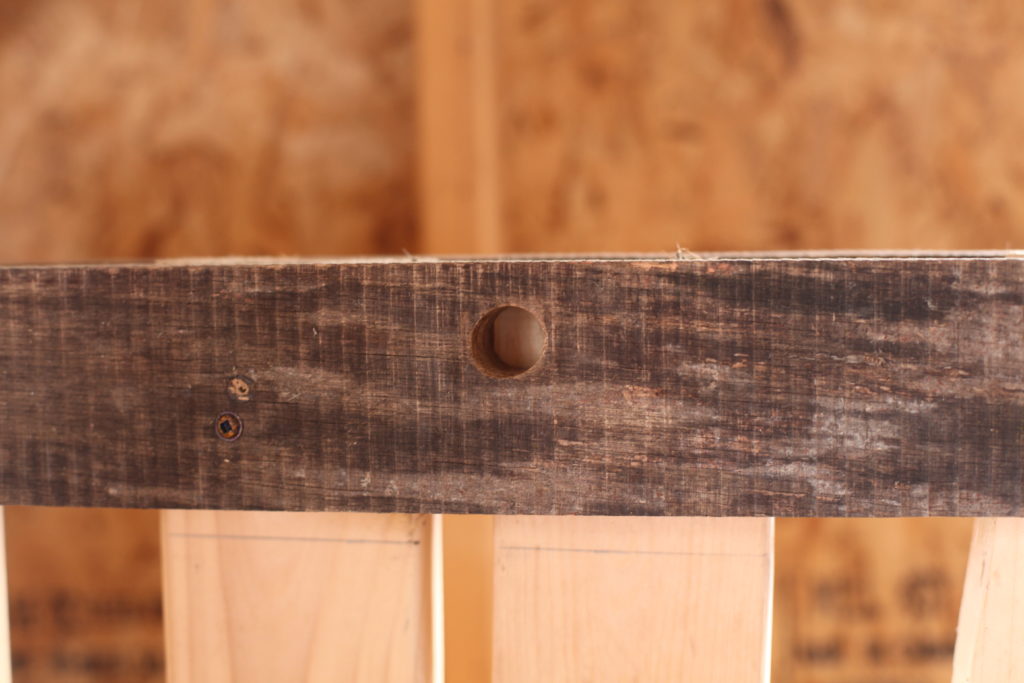
Now, the adjustable height of the feeders is where he really got creative. Ever hear of a french cleat? Yeah, me neither.
One of the major design changes I wanted to make away from “standard” was the ability to adjust the height of the feeder regardless of goat size. So, the solution to the problem was creating these french cleats! Basically, the feeder is permanently attached to the piece of wood with the “male” cleat. He then attached two different pairs of “female” cleats at two different heights that we tested and were comfortable for the different sized goats. The 1st cleat also known as the Nigerian Dwarf height (pictured right) from the top of the base to the top of the feeder itself is 12″. The 2nd cleat also known as Nubian height is 18″ from the top of the base to the top of the feeder. This makes changing the feeder heights a breeze. Simply pop the board out and pop it in the required height! This makes eating more comfortable for the goats and as a result, they will give you less grief which is always a win.
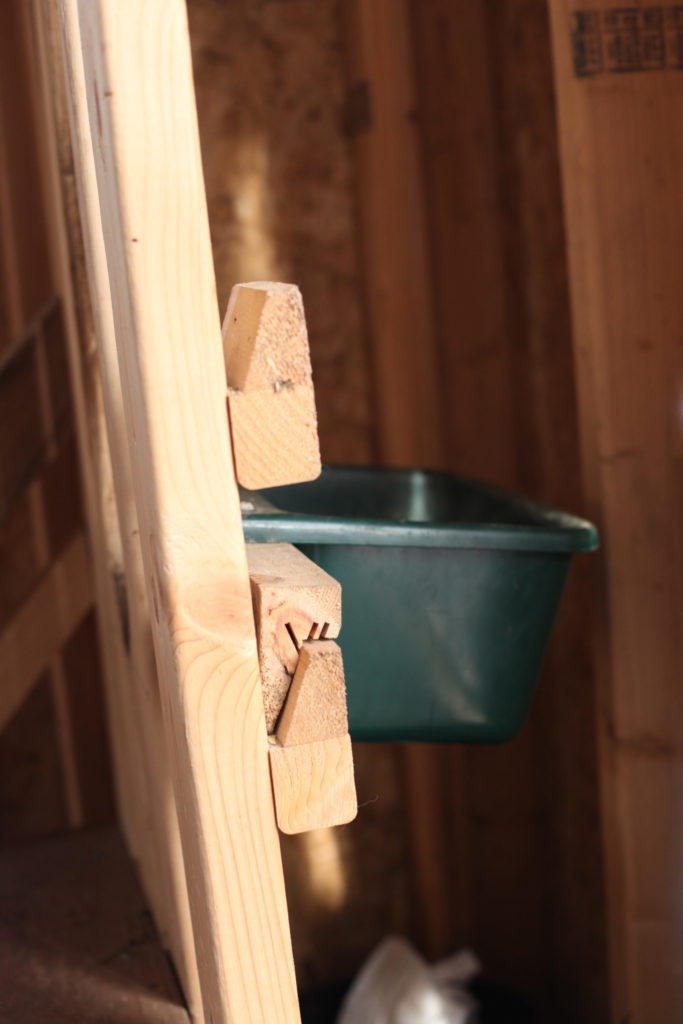
This stand truly is one of the greatest things I could ask for as far as keeping goats is concerned. All of the little tweaks, and clever customizations really makes it work for me and my herd. Maybe you’re short and don’t need a stand so tall or you only raise a certain breed and don’t need varying feeder heights. Whatever the situation, building one yourself is not hard and honestly it will save you a ton of money! Has anyone else built their own goat milk stand and customized it to their needs? Comment below, let’s hear them!
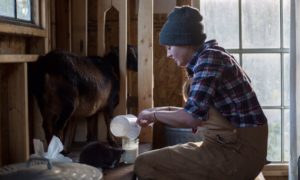
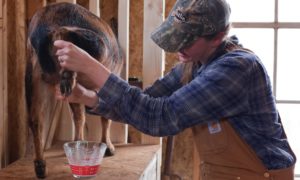

Love Cherylâ¤
What a great and helpful post, thank you!! I’ve been wanting a milk stand for my goats since they were babies, and they’ll be 3 years old this June. I’ve taken screenshots of all your helpful info and showed hubby this morning. Yep…it’s time. ☺ï¸Â
I’m so glad you found it helpful! Hopefully you got yourself a stand built to your liking! 🙂
Pingback: My Milking Routine – The Modern Day Settler
Pingback: Milking an Unruly Goat | The Modern Day Settler
Pingback: Preparing a Doe for Kidding and Pregnancy Care | The Modern Day Settler
Pingback: How To Trim a Goat's Hooves | The Modern Day Settler
Pingback: Sep 63
Loved the design. My wife showed it to me so I built one today. Only took a few hours with the scrap lumber I had laying around. Minor adjustments for our needs. We are only doing Nigerian dwarfs and we don’t have a set spot for the stand yet so I used some castor wheels to be able to move it around.
Scrap wood makes the best milk stand! Putting it on castor wheels is a fantastic idea too!! Love it.
omg I love this and a french thing i am 100 showing this to my honey
granted we plan on sticking with the nubs i want my stand for also training the girls at a young age even when they are small so feet and such… having the smaller height has an ability to feed and train the younger ones will be wonderful
even with doing their feet thank you soooooooo much
Yes, the height difference capability is extremely useful no matter what breed you raise! Best of luck!
Pingback: Goat Mini Barn Tour - UPDATE - The Modern Day Settler
Pingback: How To Hand Milk a Goat - The Modern Day Settler